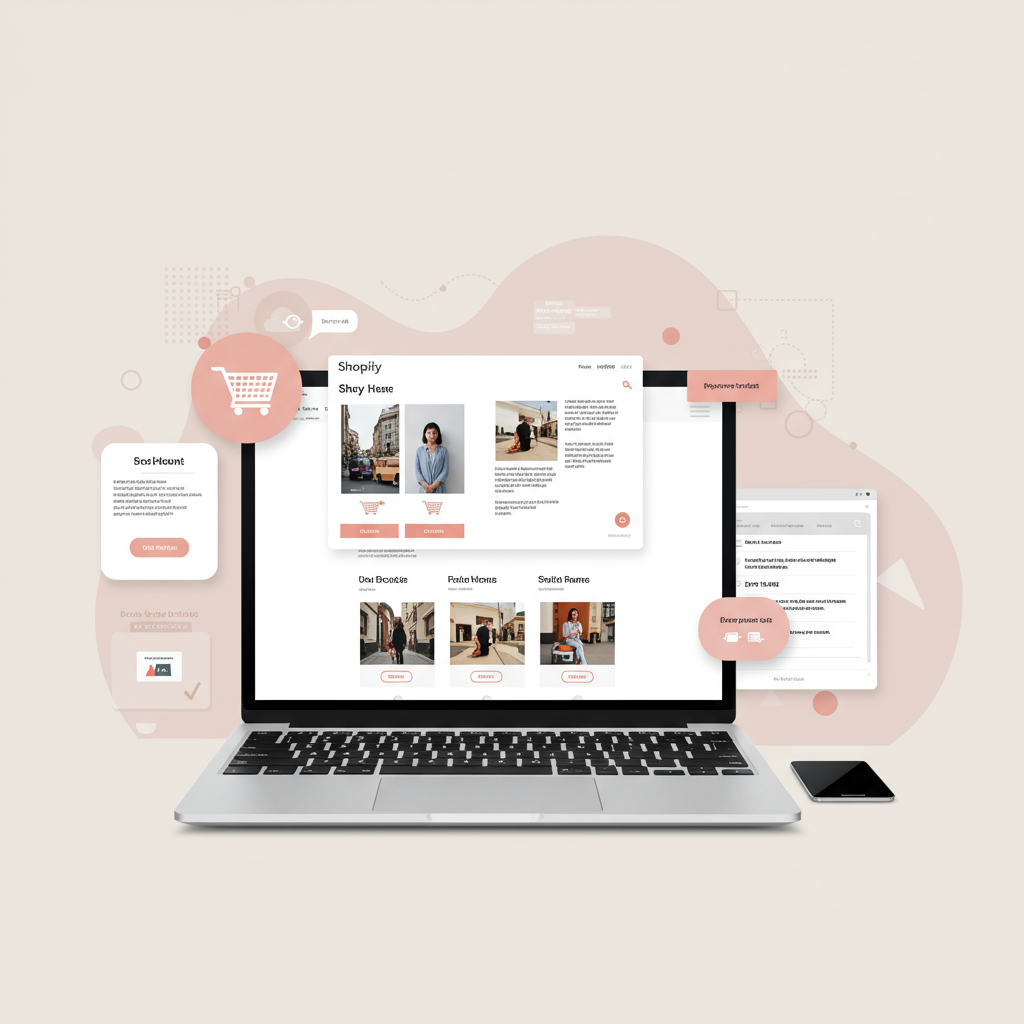I’m here to share my top strategies for designing a high-converting Shopify homepage that resonates with your customers in the coming year.
As a merchant navigating the ever-evolving e-commerce landscape, I know firsthand that your Shopify homepage isn’t just a digital storefront; it’s the beating heart of your online business. It’s often the first impression, the virtual handshake, and the primary conversion engine.
In 2026, with competition fiercer than ever, a well-designed, optimized homepage is no longer a luxury—it’s an absolute necessity. I’m here to guide you through the essential strategies I believe will make your Shopify homepage stand out and convert visitors into loyal customers.
My focus today is on future-proofing your design, considering emerging technologies and shifting consumer behaviors. We’ll delve into elements that not only look good but also perform exceptionally well, driving sales and building brand loyalty.
First and foremost, I cannot stress enough the importance of a mobile-first approach. By 2026, the vast majority of your traffic will likely originate from mobile devices. I always design with the smallest screen in mind, ensuring a seamless and intuitive experience on smartphones and tablets.
Page load speed is another critical factor. I’ve seen countless potential sales lost due to slow-loading pages. Optimize your images, leverage lazy loading, and minimize unnecessary scripts. Shopify’s infrastructure is robust, but your content choices significantly impact performance.
Let’s talk about the hero section – the very first thing visitors see. This is your prime real estate. I always ensure it clearly communicates my unique value proposition within seconds. Use a compelling headline, a concise sub-headline, and a strong, clear call-to-action (CTA).
High-quality, engaging visuals are non-negotiable here. Whether it’s a stunning product photo, a lifestyle shot, or a short, impactful video, it needs to grab attention. I recommend using visuals that evoke emotion and directly relate to your brand story.
Next, consider your navigation. I believe simplicity and clarity are key. Your main menu should be easy to find and understand, guiding visitors effortlessly to key product categories, collections, and essential pages like ‘About Us’ or ‘Contact’.
Don’t forget a prominent search bar. For customers who know what they’re looking for, a quick and efficient search function is invaluable. I always ensure it’s easily accessible and provides relevant, fast results.
Showcasing your best products effectively is crucial. I like to feature best-sellers, new arrivals, or seasonal collections directly on the homepage. Use high-quality images, clear product titles, and perhaps even quick-view options.
Looking ahead to 2026, personalization powered by AI will be a game-changer. I’m already experimenting with Shopify apps that dynamically display products based on a visitor’s browsing history or demographic data. This creates a highly relevant shopping experience.
Building trust is paramount. I always integrate social proof prominently. This includes customer reviews, testimonials, star ratings, and trust badges. Seeing that others have had positive experiences significantly boosts confidence in your brand.
Your homepage is also an opportunity to tell your brand story. I often include a small ‘About Us’ section or a link to a dedicated page. Connecting with your audience on an emotional level fosters loyalty beyond just transactions.
Every section of your homepage should have a purpose, and often that purpose leads to a clear call-to-action. I ensure my CTAs are visually distinct, use action-oriented language, and guide the user towards the next logical step.
Video content is increasingly powerful. I’ve found that short, engaging product videos or brand story videos embedded directly on the homepage can significantly increase engagement and time spent on site. They convey information quickly and effectively.
In 2026, accessibility isn’t just a good idea; it’s a legal and ethical imperative. I always design with WCAG guidelines in mind, ensuring my site is usable by everyone, including those with disabilities. This includes proper alt text for images and keyboard navigation.
While the homepage isn’t always the primary SEO target, it still needs to be optimized. I ensure my title tags, meta descriptions, and image alt text are relevant and include target keywords where appropriate. This helps search engines understand your site’s purpose.
Don’t overlook the footer. I use it for essential links like privacy policy, terms of service, shipping information, and contact details. It’s also a great place for social media links and newsletter sign-ups.
My final, and perhaps most crucial, piece of advice is to always be testing. I constantly A/B test different headlines, CTA buttons, image placements, and even entire section layouts. Data-driven decisions are the most effective.
Regularly review your Shopify analytics. I pay close attention to bounce rates, time on page, conversion rates, and user flow. These metrics provide invaluable insights into what’s working and what needs improvement on your homepage.
Leverage Shopify’s ecosystem. I explore various themes to find one that aligns with my brand vision and offers the flexibility I need. The Shopify App Store is also a treasure trove for adding advanced functionalities like personalization, reviews, or advanced search.
Maintain brand consistency across your entire homepage. I ensure my colors, fonts, imagery, and tone of voice are uniform, reinforcing my brand identity and creating a cohesive, professional look.
Remember, designing a high-converting homepage is an iterative process. It’s not a ‘set it and forget it’ task. I view it as a living entity that needs continuous refinement based on user feedback and performance data.
I’ve shared my top strategies for optimizing your Shopify homepage for 2026. What do you think about these tips? Are there any other aspects you’ve found particularly effective in your own e-commerce journey?
By focusing on user experience, mobile optimization, personalization, and continuous testing, you’ll be well on your way to creating a Shopify homepage that not only looks fantastic but also drives significant growth for your business in the years to come. I wish you the best of luck!






